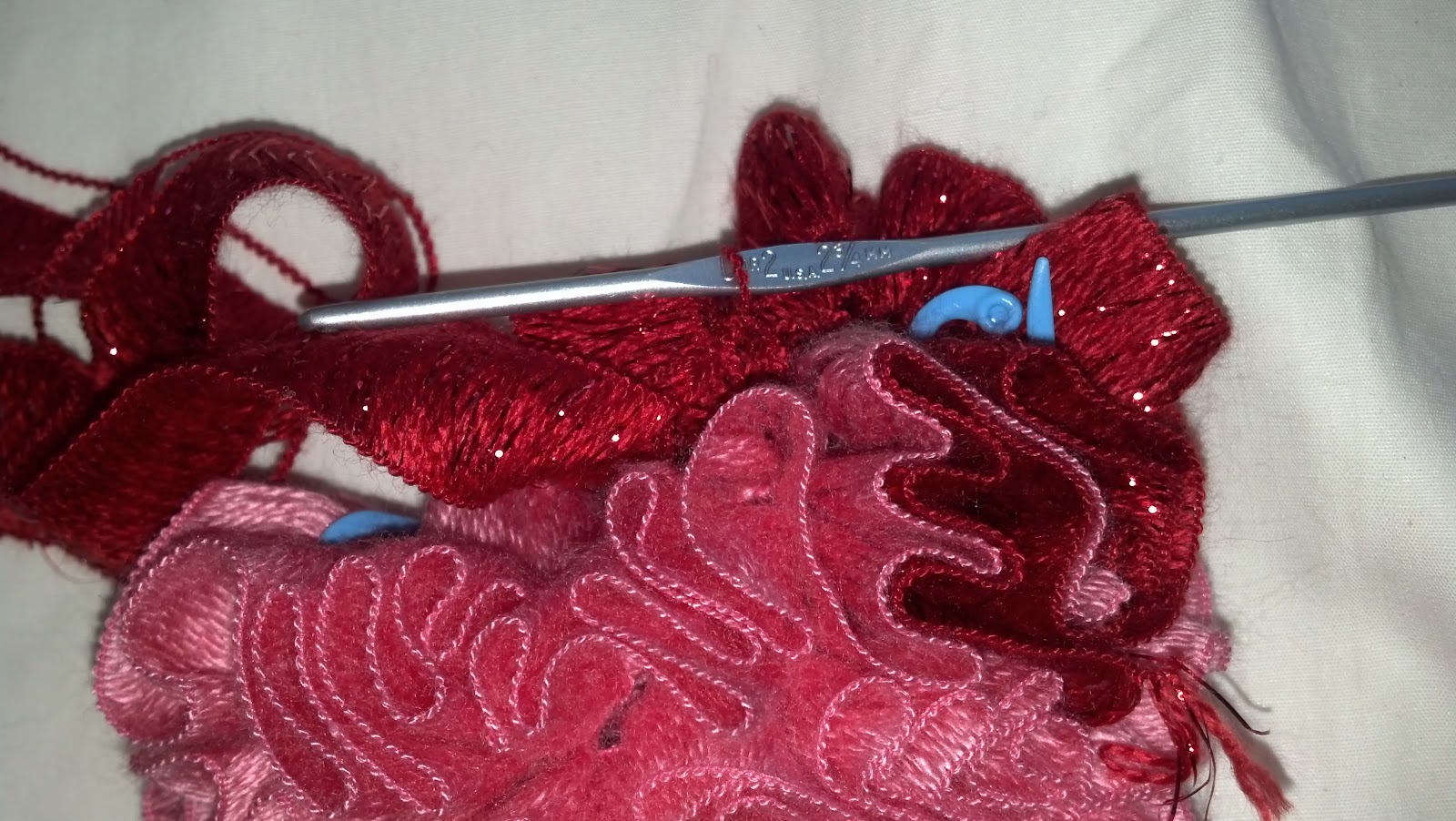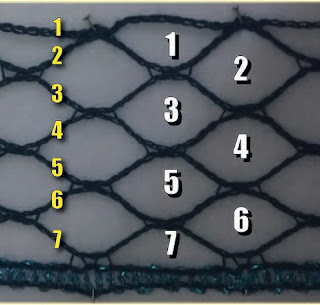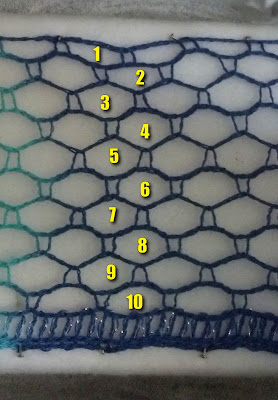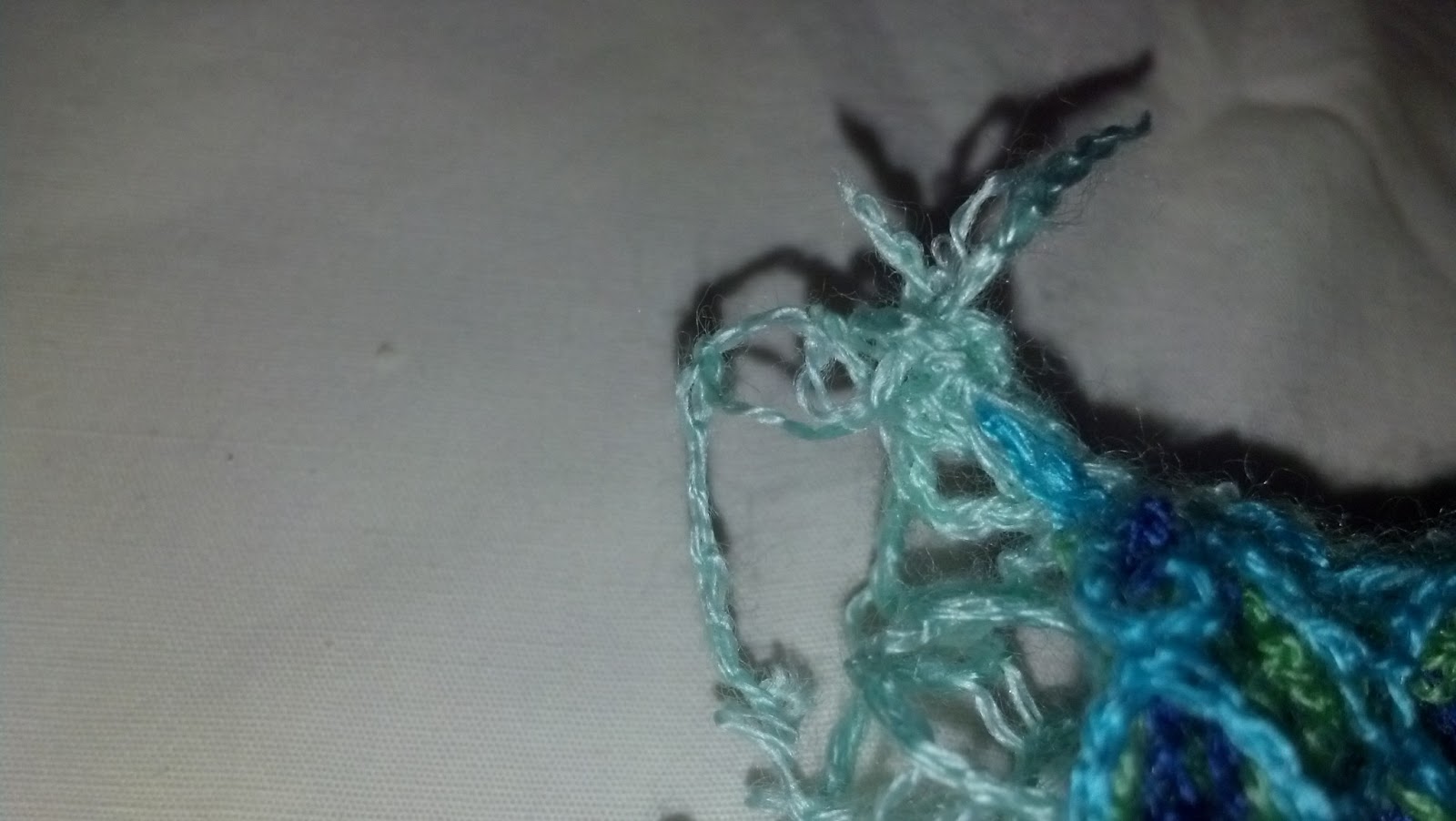There are two places in our work in which we come to the end of the yarn: when we are about to finish a skein in the middle of our work (and need to graft in more yarn to continue), or when we come to the end of our work and need to secure the final stitches.
Because of its bulk, the ends of a ball of ruffle yarn cannot be woven into the work the same way we work in the ends of traditional yarns.
Adding More Yarn
 |
| We've come to the end of our yarn |
 |
Overlay the old and new yarns
(contrast used to demonstrate technique) |
 |
| Work the two yarns as one until the old yarn runs out |
When adding more yarn, overlap the last three or four loops of the ball you are about to finish with the first three loops of the new ball. Work the loops of both balls together, the same way you did with the folded-over loops at the start of your work.
 |
| Now working with just the new yarn |
 |
How the old and new yarns work into each other
(this would be invisible with the same color yarn) |
Finishing Your Work
With a Pulled-Through End (Ribbon Yarns, Worked As Yarn)


As you approach your last several stitches, count out the number of loops you will need to complete those stitches, plus an additional four loops.
When you get to the end of your work, pull the remaining yarn through the last loop.
Pull to tighten the last stitch and secure the tail.
If the stitch will not tighten (which is typical for ruffle yarns), you will need to use sewing thread to secure the tail to the back of the work.
With a Sewn-In End
As you approach your last several stitches, count out the number of loops you will need to complete those stitches, plus an additional four loops.
Cut the yarn along its width.
Fold back the last four loops of the yarn, the same way you did with the first two loops when starting your work.
Work as usual, binding off (knitting) or crocheting your final stitches.
At the end, you should have a single loop of doubled yarn on your hook or needle.
Take a needle and sewing thread, and sew this loop, either to the first two unworked threads of the yarn's edge, or to the previous two or three stitches of your work.
With a Knotted End (Mesh Yarns Only)
As you approach your last several stitches, count out the number of loops you will need to complete those stitches, plus an additional few loops.

Cut the yarn along its width.
Using only the four extra loops, cut the yarn along its length between the second and third threads, or between the highest-number worked thread and the thread beneath it..(If the yarn has many threads, you may want to make a parallel cut several threads down, to end up with two "strings" of about equal bulk, plus an embellished tail.)
At the end of the work, pull the working threads through the loop formed by the last stitch, leaving the cut part of the yarn behind.
Using the pulled-through yarn as one "string", and the remainder as a second "string", tie the two strings together using a square knot.
Trim the trailing ends, (and if appropriate, the embellished tail).



























